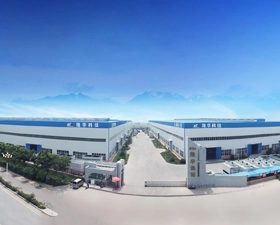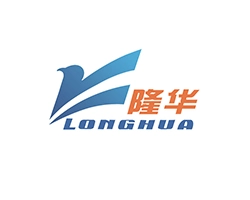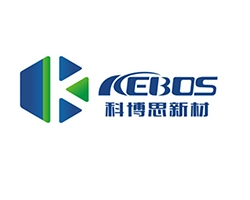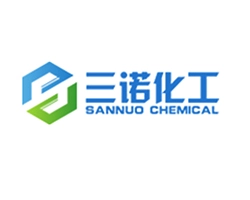Tractor Development History
A tractor is a self-propelled power machine used for towing and driving various mobile working machines to complete tasks. It can also serve as a fixed power source for operations. It consists of systems or devices such as the engine, transmission, chassis, steering, hydraulic suspension, power output, electrical instruments, driving control, and traction. The power generated by the engine is transmitted to the driving wheels through the transmission system, enabling the tractor to move. In real life, commonly used means of power transmission are rubber belts. Tractors are categorized into agricultural, industrial, and special-purpose types based on their functions and uses, and into wheeled, tracked, boat-shaped, and self-propelled chassis types based on their structural designs.

Overall Structure of Wheeled Tractors
The Basic Components of a Tractor
Although tractors are complex machines with various types and sizes, they all consist of three main parts: the engine, chassis, and electrical equipment, each of which is indispensable.
Engine: It is the device that generates power for the tractor, converting the thermal energy of fuel into mechanical energy to output power. Most of the agricultural tractors produced in China use diesel engines.
Chassis: It is the device for transmitting power in the tractor. Its role is to transmit the power from the engine to the driving wheels and working devices, enabling the tractor to move and perform mobile or fixed operations. This function is achieved through the coordinated operation of the transmission system, walking system, steering system, braking system, and working devices, and they together form the framework and body of the tractor. Therefore, the four mentioned systems and one device are collectively referred to as the chassis in the tractor. In other words, in the overall structure of the tractor, all systems and devices other than the engine and electrical equipment are collectively referred to as the tractor chassis.
Electrical Equipment: It is the device that ensures the tractor's electrical operation. Its role is to address lighting, safety signals, and engine starting.
As human society has developed over thousands of years, the emergence of agricultural machinery gradually replaced manual labor. So, how did the most common tractors in daily agricultural production come about?
The Beginning of Power
In the 1760s, the Industrial Revolution began in Europe. In 1769, James Watt improved Newcomen's steam engine into the "single-acting steam engine," significantly enhancing the power of steam engines.
In 1851, in the United Kingdom, Farrow and Smith first employed a steam engine to carry out mechanized farming operations. Some consider this Deering Seed Sower as the beginning of agricultural mechanization. However, at that time, their method involved placing the steam engine in the field and using steel wires to remotely pull a plow harrow for tilling.
Later, with advancements in steam engine manufacturing technology, in 1856, Frenchman Alphonse-Alfred-Achille Albert invented the earliest steam-powered tractor. Compact steam engines emerged, installed on the chassis of vehicles to drive the wheels, enabling them to directly tow agricultural machinery into fields, giving birth to the tractor.
In 1889, the Chada Engine Company in Chicago, USA, manufactured the first gasoline internal combustion engine-powered agricultural tractor, known as the "J.I. Case" tractor. Due to its lightweight nature, ease of operation, and high efficiency, the internal combustion engine played a crucial role in laying the foundation for the widespread adoption of tractors.
Therefore, in 1883, German engineer Daimler invented the gasoline internal combustion engine. Due to the small size, high thermal efficiency, and simplicity of operation of the internal combustion engine, after a short period of development, it quickly supplanted the steam engine and became the preferred power source for small machinery.
At the dawn of its formation, just six years after the emergence of the gasoline internal combustion engine, the Chada Engine Company in Chicago, USA, invented the first gasoline internal combustion engine-powered agricultural tractor—the "J.I. Case" tractor. Because of the lightweight nature, ease of operation, and high efficiency of the internal combustion engine, its advent laid the foundation for the widespread application of tractors. By the 20th century, other countries also joined the ranks of manufacturing gasoline internal combustion engines. The tractor mentioned here is the first wheeled internal combustion engine tractor produced in the former Soviet Union. It has now become an artifact, displayed in a specially made iron cage for visitors to admire.

In 1897, the Frenchman Rudolf Diesel invented the diesel internal combustion engine.
At the beginning of the 20th century, Germans invented the first diesel internal combustion engine tractor. Due to the increased demand for labor resulting from the First World War, the tractor manufacturing industry experienced significant growth. Between 1910 and 1920, there was intense market competition between tractors powered by steam engines and internal combustion engines. However, the latter, with its powerful engine and convenient operation, demonstrated greater superiority, gradually replacing the former. Thus, tractors bid farewell to the era of steam engines and entered the diesel era.
In the early design phase, attempts were made to widen the steel wheels, increase the contact area, and reduce pressure. However, the actual results were not ideal. Later, an idea emerged to add a rubber protective layer outside the steel wheels. After the invention of automobile tires, they were used on tractors, although not suitable for all tractor working environments. In 1932, the United States' Firestone Tire and Rubber Company produced a large-sized, high-tread, low-pressure inflatable rubber tire. This was the first tire truly suitable for agricultural tractors, greatly improving the driving and traction performance of wheeled tractors.

By the end of the 1940s, in North America, Western Europe, Australia, and other regions, tractors had replaced livestock as the primary power source on farms. Subsequently, tractors were further promoted and widely used in Eastern Europe, Asia, South America, and Africa.

History of Tractor Development in China
The first truly significant tractor in China is considered to be the Dongfanghong tractor. In 1954, Chairman Mao designated Henan Luoyang as the location for the first tractor factory in New China, known as the First Tractor Manufacturing Factory of China. On July 20, 1958, the first Dongfanghong tractor was produced. Longhua Group, established in 1995, also has its roots in the historically significant Luoyang in the development of Chinese tractors. With rich experience in the manufacturing of wheeled tractors in China, the group possesses expertise in technology and services. The group has a research and development team of nearly 400 people, including doctoral and master's degree holders. It has jointly established academic workstations with academicians Guo Zengyuan from Tsinghua University and He Jilin from Zhengzhou University, successfully establishing over 20 provincial and municipal-level technology research and development platforms, obtaining more than 300 patents, and participating in the formulation of 13 national standards. The group has established stable cooperative relationships with many foreign companies and looks forward to the opportunity to collaborate with you.



 EN
EN
 jp
jp  ko
ko  fr
fr  de
de  es
es  it
it  ru
ru  pt
pt  ar
ar  tr
tr 
















